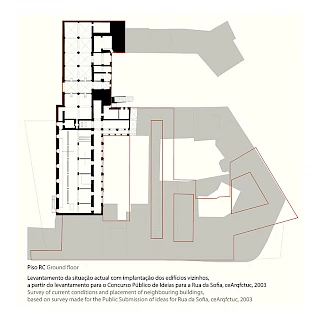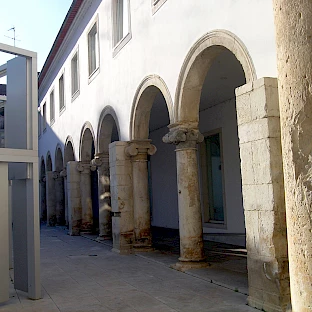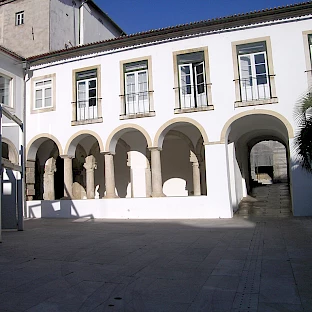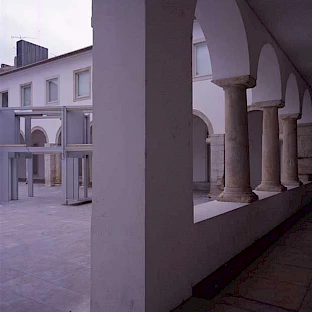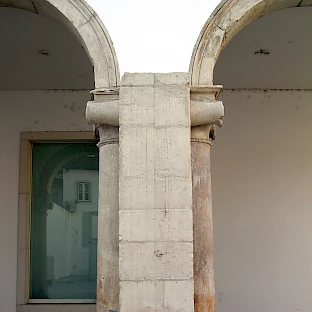Royal College of Arts – Inquisition Courtyard
Designation
Royal College of Arts - Inquisition Courtyard
Ocupação atual
Visual Arts Centre
Propriedade
Coimbra's City Council

Art-historical characterisation
The Royal College of Arts, a secular institution whose aim was to prepare students to study the University's major subjects, was provisionally established in the Colleges of São Miguel and Todos os Santos, in Rua da Sofia, belonging to the Monastery of Santa Cruz, and began operating in 1548. In the same year, a new annex building, called “lanço novo” began to be constructed for the College of Arts' own use, designed by João de Ruão and coordinated by Diogo de Castilho, two of the most important Renaissance artists in Coimbra.
In 1555, the College came under the administration of the Companhia de Jesus, which transferred it to the upper part of the city ten years later to form part of the Jesuit collegiate complex. The building on Rua da Sofia was handed over to the Court of the Inquisition, which remained there until its extinction in 1821. Since then, the building has been occupied by municipal services, the National Republican Guard, the theater company “A Escola da Noite” and the Casa da Terceira Idade.
In the 1950s, some sections of the old College of Arts were demolished, but the main courtyard and other areas remained untouched and were rehabilitated by architect João Mendes Ribeiro with the aim of housing the Visual Arts Center, which opened in 2003
The university colleges
When the University was definitively established in Coimbra in 1537 by order of King João III, the city was endowed with a series of collegiate buildings designed to receive students. Essentially built by different religious orders and bishops, they were a mixture of convent and student residence, with dormitories, refectories, study rooms, cloisters and churches. The first seven buildings in Rua da Sofia were joined by many others in the upper part of the city, totaling 25 in the 18th century.
In 1834, as part of the ‘General Ecclesiastical Reform’, all convents, monasteries, colleges and religious houses of all religious orders were abolished and their assets incorporated into the National Treasury. Many were reused as military barracks, hospitals, railway stations, etc., others were sold at public auction and bought by private individuals. In all cases, the change in functions and uses was radical.


